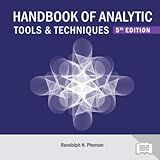Best Analytics Tools to Buy in October 2025

Data Analytics: Essential Tools and Techniques



Marketing Analytics: Essential Tools for Data-Driven Decisions (Darden Business)



Visual Analytics with Tableau



Creating Value With Social Media Analytics



Data Analytics Essentials You Always Wanted To Know : A Practical Guide to Data Analysis Tools and Techniques, Big Data, and Real-World Application for Beginners (Self-Learning Management Series)



Handbook of Analytic Tools & Techniques, 5th edition



Key Business Analytics: The 60+ business analysis tools every manager needs to know



Handbook of Analytic Tools & Techniques



Modern Data Analytics in Excel: Using Power Query, Power Pivot, and More for Enhanced Data Analytics


To track traffic sources in Google Analytics, you can follow these steps:
- Login to your Google Analytics account and navigate to the website you want to track.
- Once you're on the main dashboard, click on the "Acquisition" tab in the left-hand menu.
- Under Acquisition, you'll find various sub-categories. Click on "All Traffic" to view the traffic sources.
- By default, you'll see the summary of all traffic sources. To get more detailed information, click on "Source/Medium" or any other relevant option based on your needs.
- The "Source/Medium" report will show you a list of different sources such as Google, Bing, Facebook, etc., and the medium through which the traffic was generated, i.e., organic search, direct, referral, etc.
- Along with the list, you'll also see relevant metrics such as the number of sessions, new users, bounce rate, goal completions, etc., for each traffic source.
- To drill down further, you can click on any source or medium to get more granular data. This will reveal the specific pages on your website that brought in traffic from that source or medium.
- Additionally, you can apply filters or secondary dimensions to narrow down the data further, such as filtering by a specific campaign or region.
- If you want to compare different traffic sources, you can use the "Comparison" feature located above the data table. This helps to analyze the performance of different sources side by side.
- To track a specific campaign or tag the links on external platforms, you can use UTM parameters. A UTM parameter is a piece of code attached to a URL that helps Google Analytics identify the specific source, medium, or campaign associated with the traffic.
By using these steps, you can effectively track your website's traffic sources in Google Analytics and gain insights into where your visitors are coming from and how they are interacting with your site.
How to analyze traffic from different marketing channels in Google Analytics?
To analyze traffic from different marketing channels in Google Analytics, follow these steps:
- Log in to your Google Analytics account.
- Navigate to the "Reporting" tab at the top of the page.
- In the left-hand menu, click on "Acquisition" and then "All Traffic."
- From the drop-down menu below the graph, select "Channels."
- You will see a list of different marketing channels such as Organic Search, Direct, Referral, Social, etc. These channels represent the sources of traffic to your website.
- Click on any channel to drill down into that specific channel's traffic data.
- You can now analyze various metrics related to that particular marketing channel, such as the number of sessions, users, bounce rate, conversion rate, and more.
- To compare different marketing channels, you can select multiple channels by checking the boxes next to them. This will allow you to analyze and compare the traffic data for those channels side by side.
- You can further customize the data by applying different date ranges, segments, or filters to get more specific insights.
- Utilize other report sections, such as "Behavior" or "Conversions," to gain more in-depth insights into user behavior and conversions from each marketing channel.
By following these steps, you can effectively analyze traffic from different marketing channels in Google Analytics and gain valuable insights into the performance of each channel.
How to analyze traffic from different search engines in Google Analytics?
To analyze traffic from different search engines in Google Analytics, follow these steps:
- Sign in to your Google Analytics account and navigate to the website you want to analyze.
- On the left-hand side menu, click on "Acquisition" and then select "All Traffic".
- Click on "Source/Medium" to see the traffic sources.
- Scroll down the list of sources until you find the search engines section.
- Click on the source (e.g., google, bing, yahoo) to view the traffic from that specific search engine.
- You can further analyze the data by selecting a specific time period, comparing different search engines, or segmenting the data using other dimensions or metrics available in Google Analytics.
By following these steps, you will be able to analyze the traffic coming from different search engines and gain insights into their performance and contributions to your website's traffic.
What is the user flow report for traffic sources in Google Analytics?
The user flow report for traffic sources in Google Analytics provides insights into the paths that users take on your website and how they interact with different traffic sources. It helps you understand how users navigate through your website from the moment they enter through different channels.
The report visualizes the user flow, displaying various stages or pages visited by users, as well as transitions between these pages. It also includes traffic source data to associate the user flow with different acquisition channels such as organic search, direct, referral, social, and paid search.
By analyzing this report, you can identify the most common paths users take on your website, the most popular traffic sources, and potential drop-off points or areas of improvement. This information can be used to optimize your website's flow, improve user experience, and better understand how different marketing strategies influence user behavior on your site.
What is paid traffic in Google Analytics?
Paid traffic in Google Analytics refers to the visitors that come to a website as a result of paid advertising campaigns. This can include traffic generated from paid search ads, display ads, social media ads, or any other form of online advertising where the website owner pays a fee to drive traffic to their site. Google Analytics allows website owners to track and analyze the performance of their paid traffic, including metrics such as clicks, conversions, cost per acquisition, and return on investment (ROI).
What is organic traffic in Google Analytics?
Organic traffic in Google Analytics refers to the number of website visitors who arrive on a website through organic search results on search engines like Google. These visitors find the website by entering relevant keywords into the search engine, and the website appears as a result. Organic traffic is considered valuable as it represents visitors who found the website naturally, without any paid advertising.
How to track traffic from specific referral websites in Google Analytics?
To track traffic from specific referral websites in Google Analytics, follow these steps:
- Sign in to your Google Analytics account and navigate to the Admin tab at the bottom left corner.
- In the middle column, under the Property section, click on "Tracking Info," and then select "Referral Exclusion List."
- Click on the "+ ADD REFERRAL EXCLUSION" button.
- In the "Enter hostname" box, enter the domain or specific website you want to track (e.g., example.com).
- Click on the "Create" button to add the referral website to the exclusion list.
Now, whenever someone clicks on a link from the specified referral website, it won't be counted as a referral in your Google Analytics data. Instead, it will be counted as direct traffic. By using this exclusion list, you can effectively track traffic from specific referral websites separately.
